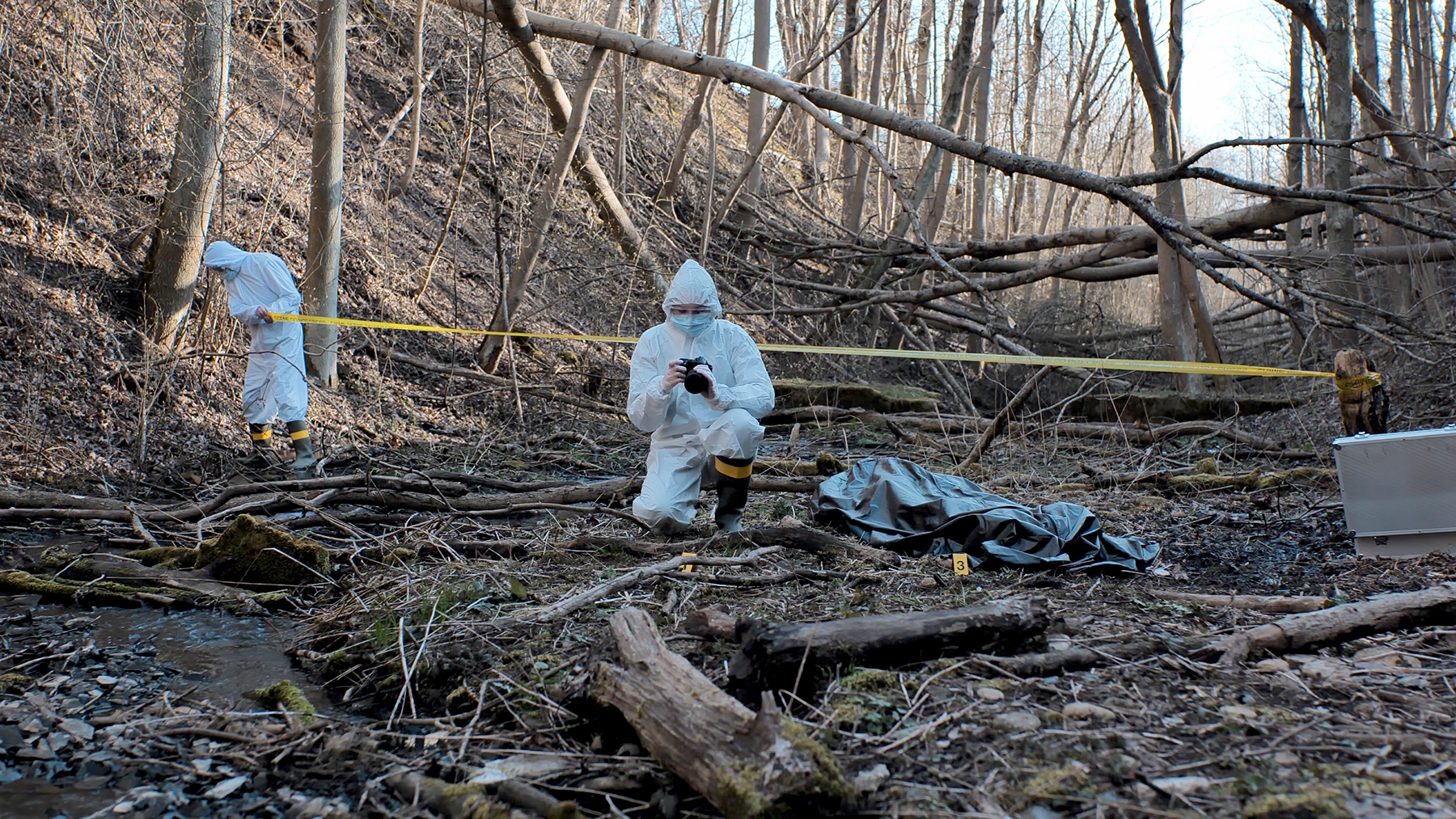I’m going to be honest with y’all. I had zero intention of endorsing any candidate for District Attorney of Berkshire County. Couple reasons for that. Firstly, her campaign is an advertising client — The Greylock Glass has never accepted campaign spots before, and I really didn’t want to hear the accusations that our editorial page is for sale (it’s not, but contact us for rates on any other section!) Secondly, Andrea Harrington is NOT the radical progressive D.A. that I wish she was. She is taking a measured, patient approach to reform while I’m really fucking tired of incrementalism in all its forms — in racial justice, in climate action, in living wage adjustments, etc.
But I get it. There’s really only so much she can do. Especially here in the Berkshires where “radical change” means bike lanes in downtown Pittsfield. Harrington’s detractors drew a bead on her during her first campaign and they have not let up. They have attempted to smear her personally, thwart her initiatives, and, worst of all, fool the public into believing that a “lightest possible hammer” approach to justice is somehow un-American.
Yeah, I was going to sit this one out. And then I read this headline in our county’s Paper of Record:
Did the Berkshire district attorney’s office mishandle a gun possession case, as her rival says? Here are the facts
Just below, in an editorial note, was the shocking assertion that:
The DA’s office unilaterally reduced the charges pending against Johnson (emphasis added)
Given that the district attorney’s office is the government body that, you know, assigns charges…WHO ELSE IN THE ACTUAL FUCK would be responsible for determining the charges? The Department of Weights and Measures? The Department of Labor Statistics? Of COURSE the D.A. acted unilaterally.
But let’s get back to that problematic headline. According to a recent study conducted by Columbia University, only 20 percent of people who read a headline will go on to read the rest of the content. That means 80 percent either don’t care about the topic or assume that they can gather all they need to know in those six to ten words. Even more disturbing? Nearly 60 percent of news readers shared an article on social media without even reading it — even when the “article” was completely filler “Lorem ipsum” text.
So this storied, stalwart publication was able to throw a grenade into the final days of the campaign, KNOWING that 80 percent of their readers would just assume the salacious headline sat atop genuine damning evidence of the consequences of Harrington’s so-called soft-on-crime administration.
The writer mush-mouths her way through almost 1,200 words before finally getting to Harrington’s response to her opponent’s accusation:
“The truth is that at all times throughout the case, my office sought to have Mr. Johnson incarcerated. He was held as a danger at our request at the beginning of the case and, at sentencing, we requested that he be sentenced to the House of Correction,” Harrington said in a statement, in response to questions about the case. “The judge simply did not agree with us and chose, as is his right, to sentence him to time served plus probation.”
And then the writer spends the next 500 or so words trailing off into oblivion, without ever answering the question, without ever committing to a pronouncement one way or the other. But it doesn’t matter that the writer is either incompetent or practicing her craft in bad faith. For the tough on crime crowd, the verdict on Harrington is in. But, if you’re thinking of voting for Shugrue, still, I hope you’ll read on.
Do you know why Harrington’s critics try to hang labels on her like “socialist” or “bleeding heart?” Because its works really well on people who want simple solutions to really complicated problems.
Reactionary, extremist rhetoric pushes the Overton window enough to the right that centrist, sensible, integrated approaches to public safety are off the table, making room for increasingly draconian responses to systemic failings. Failings that disproportionately crush the poor and people of color.
So, I guess this is going to be an endorsement of Andrea Harrington for another term as Berkshire County District Attorney after all.
While I’ve never sat down to compare ideological notes with Harrington, I know that I’d come away with one reassuring, overarching truth, regardless of our differences:
Andrea Harrington genuinely cares about fairness and about equality and about improving the lives of Berkshire County residents across the board, and that concern will translate into a reduction in the gravitational attraction of activities that lead to crime. She understands that no one factor can be tweaked to make the Berkshires more secure for people and property. You have to go macro.
It’s dangerously immature to think that you can rely on one approach. Reducing crime is an incredibly complex, long term project that requires the cooperation of multiple stakeholders from across the community.
Authoritarian methods destroy public trust, set the stage for class and racial oppression, and turn the heat up in the streets until it’s not safe for the public or the cops charged with protecting and serving.
Harrington’s detractors don’t want you to know that violent crime rose across the country during the pandemic. The Council on Criminal Justice reports that the homicide rate is still 39% higher than it was during the first half of 2019, before the COVID-19 pandemic. This disturbing trend hit cities hardest for reasons that are still being analyzed. To accuse the sitting D.A. for doing as well, or better, than most of the D.A.s across the country during one of the the hardest goddamn periods in United States history is to award her with a true badge of honor and recognition of a job well done.

But I have a personal reason for being thankful that Andrea Harrington has been at the helm of justice locally, especially during the pandemic. Early on during the COVID-19 emergency, early April of 2020, I received the public service announcement shown at left, from Andy McKeever, communications director for the D.A.’s office. The announcement explained that increased contact in stressful situations could lead to violence, and urged people to understand that they weren’t alone in the event they should become victims of abuse, or intensifying abuse. Help was available. Over the course of a couple of e-mails, he made it clear that Andrea was deeply concerned about the welfare of the most vulnerable people under her care.
I thought back to my own childhood. I remembered the first time my own father threatened to murder me. I was twelve. It was during summer break and I was helping to build an extension on the barn. The day was clear but windy, and the task that day was to erect the back wall of the loft, which would serve as the butt end of a fairly severe gambrel roof. My father explained that my job was to hold the frame up in place while he nailed six or eight support beams in place. Oh, how that structure, about thirty feet across and maybe twenty feet high tried to catch wind and yank itself out of my grasp.
The frame jerked a few inches and my father screamed at me. He locked a powerful hand around my throat and shook me like my 125 pound body weighed less than half that. Still I clung to the wall frame as he told me that if I couldn’t hold it, if it tumbled twenty-five feet down and crashed onto the pile of rocks and bricks and broken cinder blocks below…I would follow. “I’ll kill you. I swear to fucking God if you let this go, I’ll kill you. And know one will ever know.”
As the wind picked up, I turned my entire being into a human brace and held that wall. I still remember being able to detect a variance in its angle or position by a fraction of a millimeter as my father whacked the supports into place. Later, over his third Scotch, he joked about how effective his threat was. And then warned me that if I ever told anyone, he’d slice my throat and bury me in the woods where no on would ever find me.
I believed him. And over the next few years, his threats of murder varied — sometimes he’d feed me to the pigs. Other times he’d dump my body in the bushes at a rest stop. What remained a constant was my complete faith that if I ever told anyone, he really would go through with it. Why? Because back then, there was no one to call. Even 911 was a long way off. And if I called the police, why would they believe me? Didn’t all parents threaten their children with grisly death in the 80’s?
I know that if COVID-70 had struck back then, and we’d been forced to spend as much time in close quarters as many families had to today, my father absolutely would have murdered me and made my body disappear with the efficiency and perfectionism with which he did everything else. I would be a cold, unsolved case. A file gathering dust in some detective’s bottom drawer.
What I don’t know, and can’t know due to privacy laws, is if any child or spouse or partner used the numbers in the PSA Andrea Harrington sent to me and other news outlets. What I do know is that the safety of the most vulnerable was her first concern, even before we had any idea how grueling the pandemic would become. But even not knowing, I’m grateful to her that she created an escape hatch for some victim of abuse somewhere, maybe some kid stuck at home with a drunk, perpetually angry father.
I just don’t see Timothy Shugrue motivated by that sort of compassion. I can’t say what he would or wouldn’t have done in Harrington’s shoes. I just know that Andrea’s commitment to families in the Berkshires — all families — has an intensity that borders on electric. She’s clear about what she believes in and what her policy direction is. And while she’s grown and adapted to the position, she’s been a straight shooter since Day One.
With Shugrue? Meh. I don’t know if he even knows what he stands for. He’s just this sort of vague “Law and Order” guy. “Lock ’em up!” “Put the fear of the badge into ’em” kind of candidate.
Here’s the thing: if fear and punishment and pain and public humiliation could rid society of its criminal inclinations, America would be in SUCH a state of harmony by now. We’d all be just the trustingest, loviest, huggiest, back-slappingest people, we wouldn’t be able to get any work done.
You want to know what the REAL facts are? Tough on crime policies Do. Not. Work. Do you think it’s your radical lefty newspaper publisher saying that? Nuh-uh! This illumination come to you from the U.S. Department of Justice, Office of Justice Programs, who shares, in the report,
“Failure of the “Get Tough” Crime Policy”
“State and Federal governments have tried to counter violent crime by incarcerating more people for longer periods. Consequently, the United States now has the highest rate of incarceration in the world, with a prison population growth that is 10 times greater than that of the general population; our prison population has nearly quadrupled in less than 15 years. Incarceration policies have had a disproportionate impact on the African-American community.”
Those findings are backed up by an expert in the field, William R. Kelly Ph.D., who writes in his Psychology Today article,
“Why Punishment Doesn’t Reduce Crime”
Evidence demonstrates why punishment does not change criminal offending.
“We have spent $1 trillion on tough on crime and $1 trillion on the war on drugs, and these figures do not include any of the collateral social and economic costs of crime, the costs of criminal victimization, and a variety of other consequences. The total price tag, including criminal justice, drug control and the collateral costs, is estimated at $1 trillion per year.
So, what is our return on investment? What have we achieved with our nearly unilateral focus on punishment? There are several ways of looking at it, but perhaps the most direct is recidivism or reoffending. The overall recidivism rate is about 70%, meaning 70% of offenders are rearrested within five years of being released from the criminal justice system. It is important to note that recidivism is a conservative measure since it only counts those who have been caught.”
The National Institute of Justice, in a lengthy report, “Preventing Crime: What Works, What Doesn’t, What’s Promising,” lists dozens of measures that are either proven many times over or show real promise that do NOT rely on the traumatizing smackdown by the heavy hand of the law:
“Preventing Crime: What Works, What Doesn’t, What’s Promising”
• Preschool and weekly home visits by teachers to children under 5 substantially reduce arrests up to age 19
• Family therapy and parent training about delinquent and at-risk preadolescents reduce risk factors for delinquency such as aggression and hyperactivity
• Training or coaching in thinking skills for high-risk youth using behavior modification techniques or rewards and punishments reduces substance abuse
• Arresting domestic abusers reduces repeat domestic abuse by employed suspects as well as offenders living in neighborhoods where most households have an employed adult
• Building school capacity to initiate and sustain innovation through the use of school teams or other organizational development strategies reduces crime and delinquency
• Clarifying and communicating norms about behavior through rules, reinforcement of positive behavior, and schoolwide initiatives (such as antibullying campaigns) reduces crime and delinquency
• Rehabilitation programs for adult and juvenile offenders using treatments appropriate to their risk factors reduces their repeat offending rates
• Drug treatment in prison in therapeutic community programs reduces repeat offending after release from prison
• Community-based mentoring by Big Brothers/Big Sisters of America substantially reduced drug abuse in one experiment
• Community-based after-school recreation programs may reduce juvenile crime in the areas immediately around the recreation center
• Battered women’s shelters were found to reduce at least the short-term (6-week) rate of repeat victimization for women who take other steps to seek help
• Prison-based vocational education programs for adult inmates in Federal prisons can reduce post-release repeat offending
And the Urban Institute’s Justice Policy Center proposes five additional evidence-based strategies:
- Use and expand drug courts.
- Make use of DNA evidence.
- Help ex-offenders find secure living-wage employment.
- Monitor public surveillance cameras (*NOT a favorite of mine, by the way).
- Connect returning prisoners to stable housing.
In short, ANY candidate who, in 2022, openly advocates for a return to the bad old days of a coercive, pain-inflicting, humiliating form of justice is pretty much a monster — an ignorant monster who would likely be smug as hell if his threats and intimidation and terrorizing APPEARED to work on the surface, temporarily, as resentment and rage built up in already over-policed communities.
And any candidate who would Willy Horton Andrea Harrington with outrageously skewed facts is just a fucking dirtbag who doesn’t deserve to be elected or appointed to any position of public trust whatsoever, since he’s showing himself to be capable of nth level sleaze before he’s even in office.








Well said. Still sitting the fence.
Thanks of course, Sergio, for giving the piece your time and attention wherever you land on this campaign!
Thank you for this deeply thoughtful and personal endorsement Jason, backed with facts. I am so sorry to learn you lived with an abusive father.
Thank you for saying so, and for reading, of course. It’s important to spread the message that policies have real implications for the lives of real people.